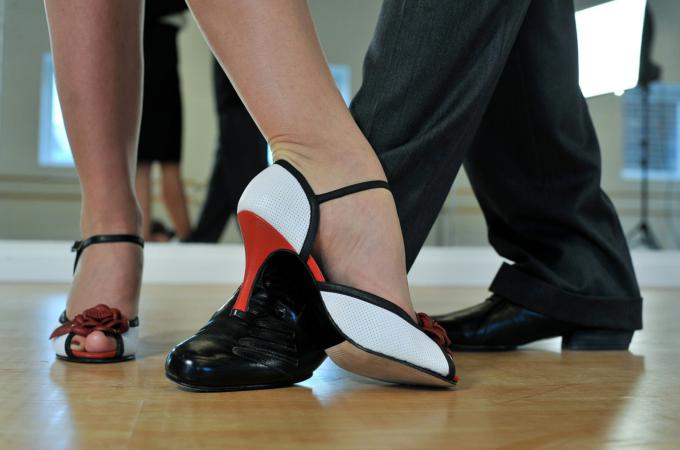The romance of ballroom dance
"To be fond of dancing was a certain step toward falling in love." -- Jane Austen
In Jane Austen's time, dancing brought young people together in much the same ways as it does in our time. Dances gave young people the opportunity to socialize, to develop romantic attachments, and to have emotional experiences set to a backdrop of music and rhythm.
What better way to observe Valentine's Day than with a throwback to the era of ballroom dance? On Tuesday, Feb. 13, Youville House Assisted Living in Cambridge will host a special Valentine Ball, presented by dance instructor Michael Winward. Many Youville residents have gotten to know Winward through his monthly "Steps in Time" ballroom dance classes taught at Youville. Winward's passion for dance is paralleled only by his love for sharing that passion with others, especially older adults.
Steps in time: A ballroom dance class for older adults
On a Tuesday afternoon, Youville residents gather around a large room that has been cleared of furniture as Winward cues the music for his first dance. In the most natural manner, he approaches "Mary," a 100-year old resident who uses a walker. "Would you like to dance?" he asks. As the music plays, the young man and older woman glide across the floor together. With Winward leading, Mary is able to follow his steps and get into the rhythm. She is smiling, but is also focused, as are the delighted spectators in the room.
Twice a month, residents like Mary are transported in time, often surprising themselves by how easily they can relearn familiar dance steps. It helps that Winward is a natural at engaging them. A professional dancer who has won numerous competitions, he looks forward to dancing with Youville residents just as much as they enjoy dancing with a talented young partner.
"I am inspired by the idea that people of all ages can have the chance to dance," Winward says. "Ballroom dancing has the power to bridge generational and cultural divides."
For many who came of age during the Depression and World War II, ballroom dancing was an important part of social life and popular culture. Fred Astaire, Rita Hayworth, Ginger Rogers and Gene Kelly made timeless films in which fancy dancing was the main attraction. Though these films may seem dated to modern viewers, the allure of ballroom dancing -- both as spectator and participant -- lives on. Reality shows like "Dancing with the Stars" have exploded in popularity, and younger people today are discovering that dance offers a unique, structured opportunity to socialize, bond with partners and learn a new skill.
Health benefits for older adults
Regardless of your level of ability, dance has wide-ranging health benefits. It is one of the few cardiovascular workouts that enables you to connect physically with music in a structured social setting. Regular dancing strengthens bones and tones muscles throughout the body, leading to increased overall strength as well as improved balance and coordination. In older age, improved coordination can be invaluable in preventing falls and osteoporosis.
Dance can also reduce your risk for heart disease, the number one killer of Americans today. Just 30 minutes of moderate dancing can burn 150 calories. Long-term benefits include reduced blood pressure and improved circulation.
The popularity of ballroom dance has ebbed and flowed since its initial swell of popularity in the 1930s and 40s. In a 1992 New York Times article, a dance instructor from Princeton, Neil Clover, offered the following theory: "Whenever we have had a war or hard times, ballroom dancing has been popular." Clover's words ring true. In the midst of war or political upheaval, ballroom dancing can reaffirm a sense of collective civility and creative energy.
If it's been a while since you last "cut a rug," then you might consider joining Youville residents in Cambridge for Michael Winward's Valentine Ball, which will be open to the community. For information, contact Yanira Motto at 617-491-1234. You might be surprised by how easily the steps come back.
- Adam Johnson writes for Youville Assisted Living Residences, member of Covenant Health Systems, a Catholic, multi-institutional health and elder care organization serving New England.



















